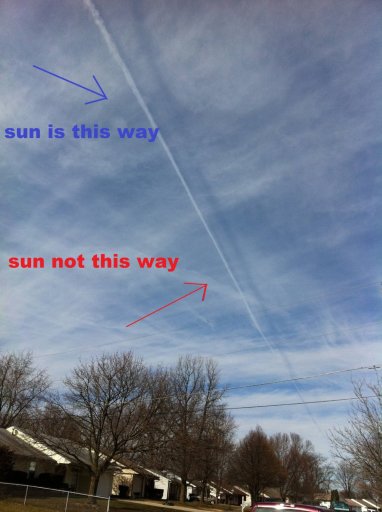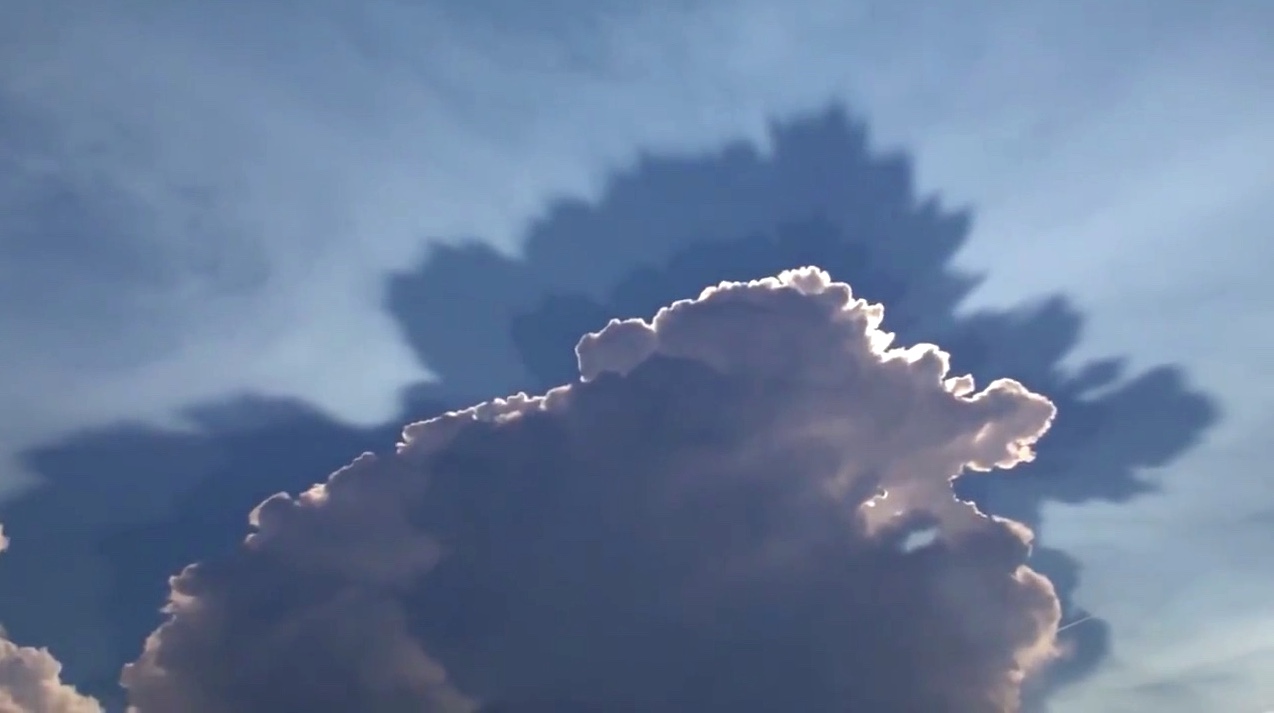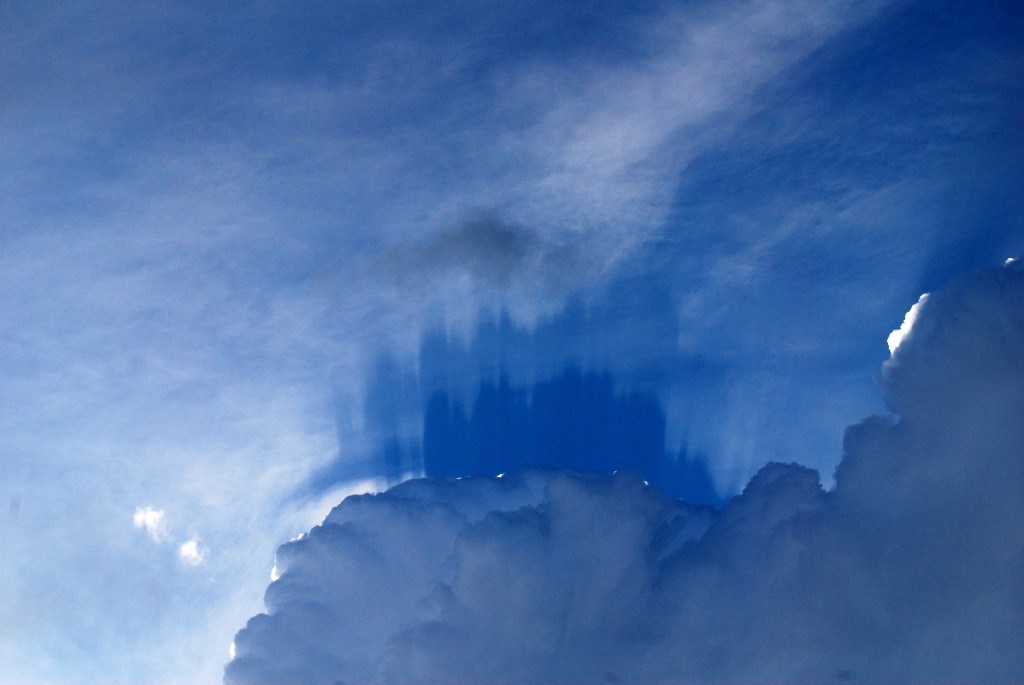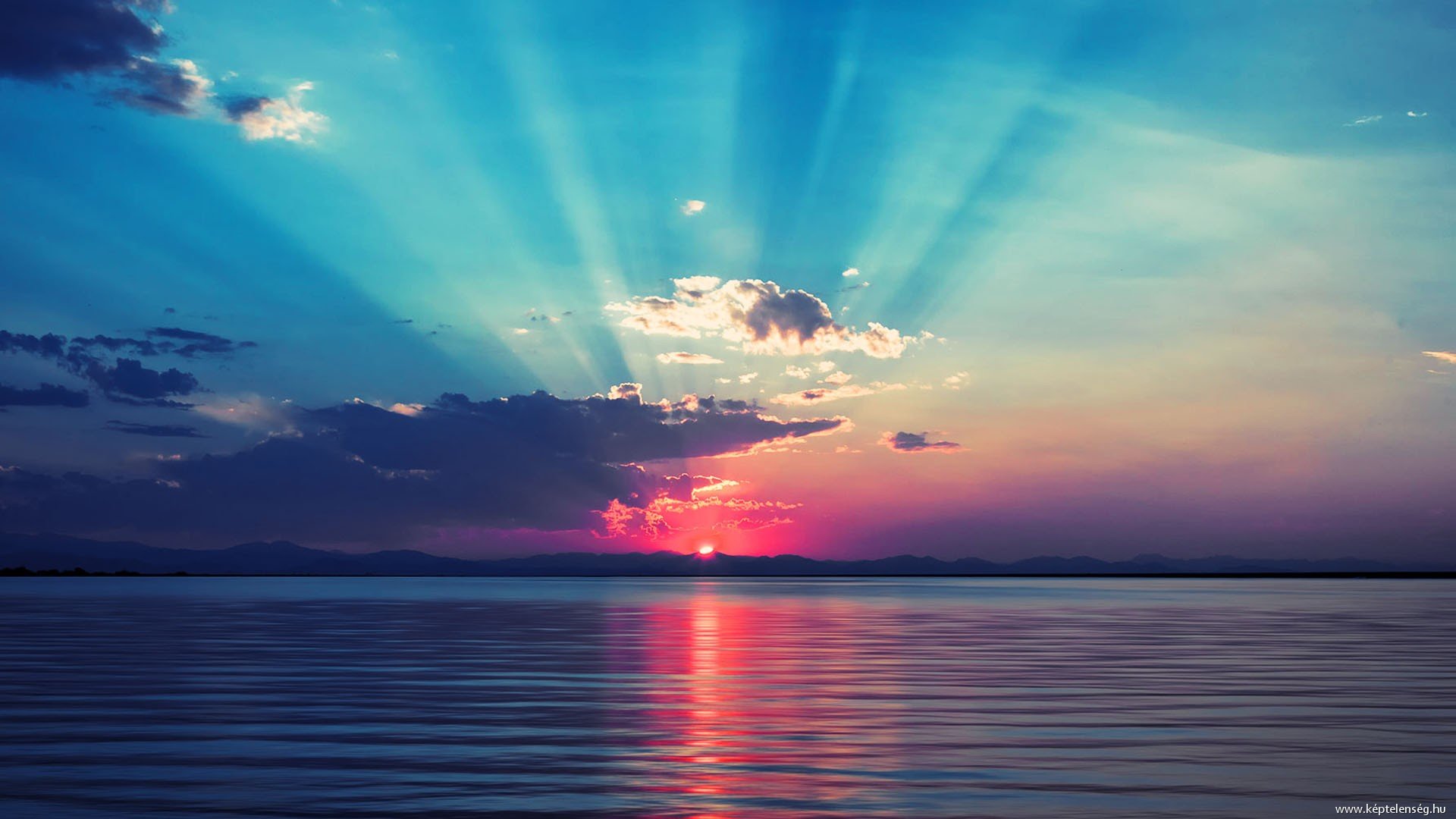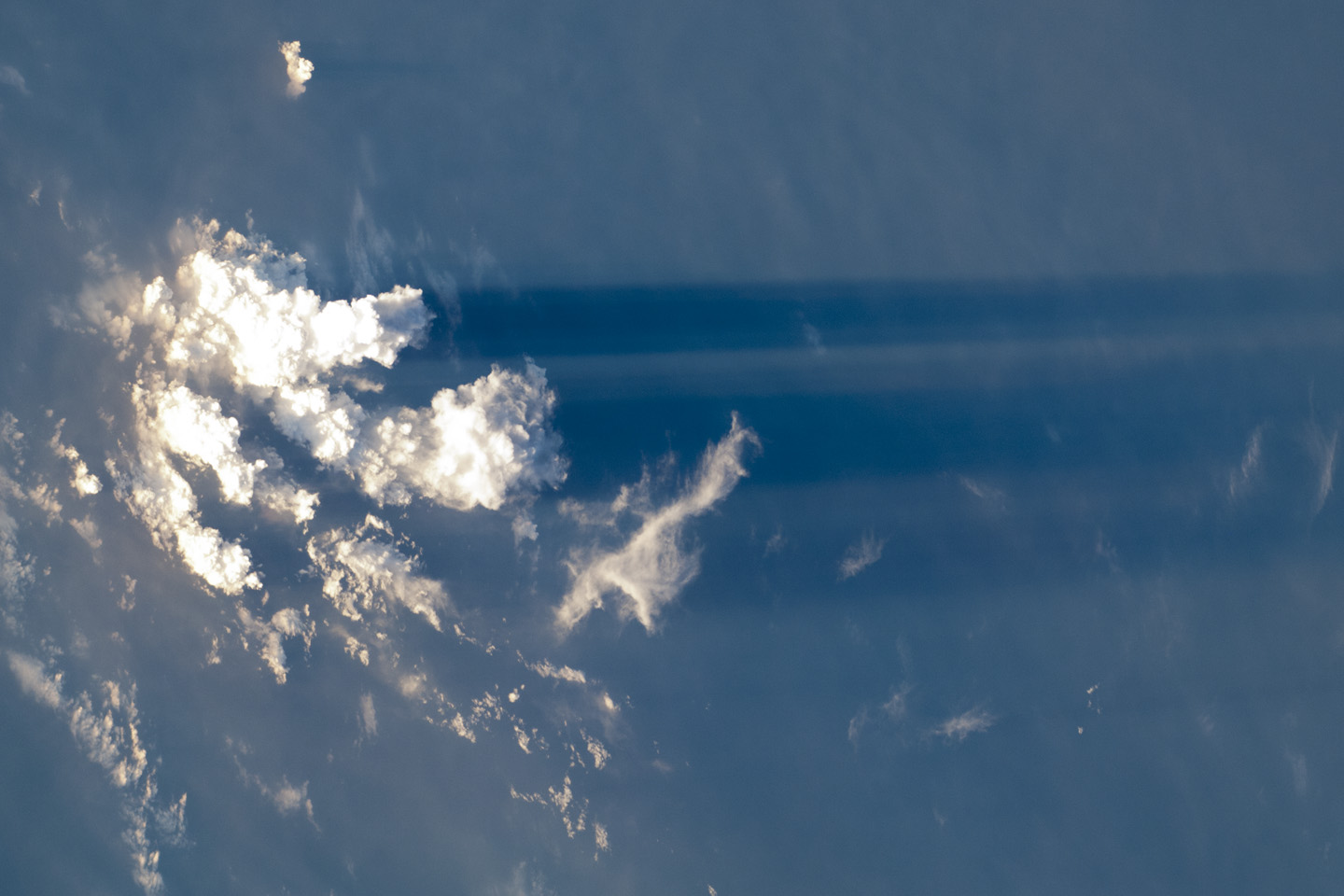Something that often happens when looking at contrails (or when people are looking for what they consider "chemtrails") is that a trail will pass though a thin region of cloud, and it's not clear if the trail is in front of the cloud (at a lower altitude), or if it is behind it (at a higher altitude). Very often it looks like the contrail is in front (lower). But how do you tell?
The short answer is that unless the cloud and/or contrail are thick enough that they block light, then it is impossible to tell. The scene will look the same (other than size) if the contrail is above the cloud or if it is below the cloud.
This seems a bit counterintuitive, however consider what a cloud (or contrail, a type of cloud) actually is. A cloud is made up of trillions of microscopic drops of water, or (if it's cold enough) trillions of microscopic ice crystals. Water and ice are both transparent. The cloud appears white because it's scattering sunlight light via refraction and reflection.
So the white shape you call a cloud is essentially made up of trillions of points of light. Contrails are the same. In the situations we are talking about, the contrail is usually denser than the cloud layer. This just means there are more points of light. in the contrail than in the cloud.
So if you put a thin cloud in front of a contrail, the cloud layer will not obscure the contrail in any way. It will simply add to it. If you put it behind the contrail, you get the exact same effect.
As an analogy, consider this firework display seen though a mesh of holiday lights strung over a street.
The mesh of lights represents the cloud layer, and the firework represents the contrail. Now we know that the firework is high in the sky, not in the middle of the street, but if we did not know that we might have a hard time telling if the mesh lights were visible through the firework, or if the firework was visible through the mesh lights. Because what we see is just the light from both of them added together, it does not actually make any difference what order the light is added together (although in this case there's the minor issue of the strings that the lights are on being visible).
To demonstrate this more, I created a Photoshop file with multiple layers representing:
- The blackness of space (what we would see if there was no atmosphere)
- Blue sky (from the atmosphere
- A plane, which is solid, and does block light
- A contrail, not solid enough to block any light, so shows up as white
- A thin cloud layer, also white, not blocking light, but more transparent.
In the animation below, you see me move the plane from behind the cloud to in front of the cloud. You see it looks very different, and it's quite obvious when the plane is in front or behind.
I then move the contrail in front of the cloud layer. You see this makes no difference at all. The only thing you see change is the border of the image, which is just there to indicate where the layers are. I move the cloud layer back and forth, and as you can see the clouds and the contrail look exactly the same in both configurations.
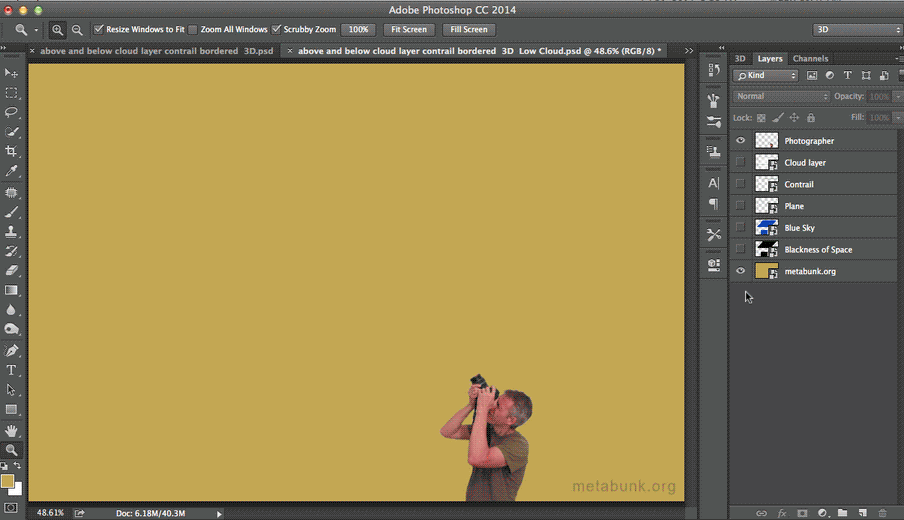
So when the contrail is above a thin cloud layer it looks just like it is below it. And since our brains expect the contrail to be partially obscured if it was above, then they automatically default to it looking like it is below.
Not being able to tell does not mean there's a 50/50 change of it being above or below. In the majority of cases the contrail will be above, as contrail form at higher altitudes than most clouds. With a high layer of cirrus though, it might be impossible to tell.

